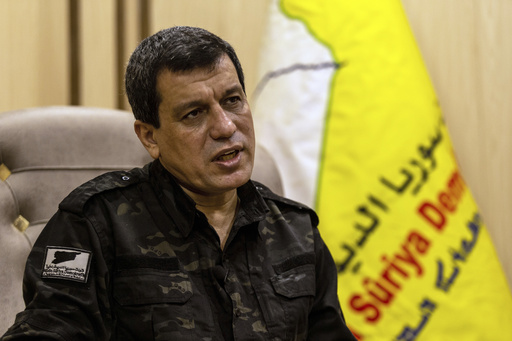BEIRUT — After half a century of governance under the Assad family, the future of Syria’s political structure is uncertain, generating a mix of anticipation and anxiety among the population. The departure of President Bashar Assad has sparked a complex situation where a once-dominant regime may be replaced by an environment filled with possibilities—and risks.
The rebellion that led to Assad’s ouster is rooted in various factions, including Islamist jihadi groups. Ahmad al-Sharaa, the leader of Hayat Tahrir al-Sham (HTS), has stated his intention to move beyond past connections to al-Qaida, promising to develop a diverse and civil institution-led governance for Syria, steering clear of both authoritarianism and rigid ideologies. Nevertheless, the insurrection consists of numerous factions, and armed groups—like the U.S.-backed Kurdish fighters occupying the eastern regions—continue to complicate the landscape. The remnants of the previous regime’s military and security apparatus may also regroup, posing a potential threat.
Amidst this tumult, foreign interests are deeply embedded, making it likely that powers such as Russia, Iran, Turkey, the United States, and Israel could interfere, complicating the internal dynamics further. Syria is home to a diverse population comprising Sunni Muslims, Shiite Alawites, Christians, and ethnic Kurds, and the impending shifts could either lead to unification or chaos. Historical divisions exacerbated by Assad’s authoritarianism and the 14-year civil conflict have created fears of revenge against former regime supporters or communities assumed to have backed the old order.
The conflict has uprooted half of Syria’s prewar populace of approximately 23 million, with many displaced individuals now closely observing the upheaval to assess whether conditions are right for their return. Presently, uncertainty looms over how the new governance will take shape.
As the dust settles post-Assad’s exit, Ahmad al-Sharaa has sought to assure the populace that HTS will not seek total control and will provide continued governance services while considering decentralization. There have been discussions between officials who stayed in Damascus, including Prime Minister Mohammed Ghazi Jalali, and rebel leaders on how to facilitate a smooth power transfer. Recently, reports emerged indicating HTS might appoint Mohammed Al-Bashir from a governing body in northwest Syria to establish a transitional administration, although official confirmations remain absent.
In the wake of the rapid developments in Damascus, experts note that the rebels quickly learned they had not anticipated the full scope of the responsibilities of governing an entire nation. The dissolution of police and military structures has posed substantial security challenges. Current transition frameworks no longer hold relevance, as U.N. Security Council Resolution 2254 promoted a process involving both Assad’s government and opposition factions, which has become obsolete in the newfound power vacuum.
Despite calls from the interim government’s prime minister for public sector workers to return, many have hesitated, leading to disruptions in key areas such as airports and borders. The U.N.’s humanitarian efforts are also facing hurdles, complicating the distribution of essential aid.
The insurgents have shown a resolve to maintain order and have reassured various religious minorities about their safety, despite the initial fundamentalist origins of HTS. So far, relative calm prevails, but experts caution that unity may falter when real decisions must be made. Past associations within HTS may not uniformly align with al-Sharaa’s vision, and reports of extreme sentiments have emerged as fighters have openly opposed the idea of a secular state.
Differing factions within the opposition are notably distinct, each with their agendas and territorial claims. This divergence could lead to internal strife and instability as different armed groups vie for power. Some within the insurgency advocate for the exclusion of former members of Assad’s expansive bureaucratic system. However, mass purges could easily provoke significant backlash, reminiscent of the chaotic disbandment of Iraq’s army post-Saddam Hussein regime that spurred an insurgency.
Among the most vulnerable demographics are the Alawites, the sect associated with Assad and his allies, who are viewed with hostility by many Sunni fighters. This already tense scenario raises further questions regarding the Kurdish forces, who have maintained a semi-autonomous region in northeast Syria, complicating their interactions with Arab opposition groups. The relationship between HTS and Kurdish forces appears tenuous, and any efforts to reintegrate Kurdish territories may provoke backlash from Turkey, which opposes Kurdish aspirations.
In summary, Syria finds itself at a crossroads laden with uncertainty and potential conflict. While the insurgents’ current approach toward minorities seems moderately conciliatory, ethnic violence could resurface rapidly if tensions are not managed carefully. Time will reveal the fate of the nation as it navigates this critical juncture laden with complex challenges.




